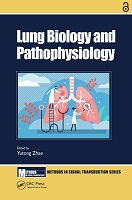Chapter 13 Pulmonary Diseases and Traditional Chinese Medicine
Proposal review
| dc.contributor.author | Zhao, Baochang | |
| dc.contributor.author | Shu, Xiaohong | |
| dc.contributor.author | Zhang, Hong | |
| dc.date.accessioned | 2024-01-08T12:44:36Z | |
| dc.date.available | 2024-01-08T12:44:36Z | |
| dc.date.issued | 2024 | |
| dc.identifier.uri | https://library.oapen.org/handle/20.500.12657/86476 | |
| dc.description.abstract | ch. 13 Traditional Chinese medicine (TCM) is a brilliant component of Chinese culture with more than three thousand years of history. The ancient Chinese philosophical thought brought TCM a unique theoretical system that is the guiding principles of “holism” and “syndrome differentiation and treatment.” Chinese herbal medicine, a particularly important component of the whole TCM, has been utilized to treat and prevent various diseases including respiratory diseases. In the present chapter, we will briefly describe the treatment strategies of Chinese herbal medicines for five lung diseases from the modern scientific perspective. We will discuss the following diseases: viral infection (specifically SARS-COV-2 infection, the major disease currently prevalent), acute lung injury/acute respiratory distress syndrome, bronchial asthma, chronic obstructive pulmonary disease, and pulmonary fibrosis. We have collected relevant literature and described some representative TCM formulas and their compositions, known chemical ingredients in some important herbs, and possible mechanisms of action for treating these diseases. The Chinese herbal medicines can act on various inflammatory cells, immune cells, and even structural cells, and enable them directly or indirectly to act on biomolecules in the body, such as enzymes and mediators of signaling pathways. The medicines can play roles in anti-inflammation, anti-oxidation, immunomodulation, anti-airway remodeling, anti-pulmonary fibrosis, regulation of water, electrolytes, acid-base balance, hormone agonist/antagonist-like effects, and so on, in effort to achieve the goal of treating both symptoms and root causes. TCM has its unique effectiveness and advantages in treating and preventing diseases, and it is receiving attention from the medical community around the world. However, TCM, after all, is an ancient traditional medicine that emerged in an era of relatively backwards productivity. Its theory and application are subject to certain limitations, and there is an urgent need to conduct in-depth research and organization using modern scientific methods. Practice has proven that the combination of TCM and Western medicine can produce significant therapeutic effects on diseases compared to using any medicine alone. The purpose of this chapter is to introduce and deepen people's understanding, interest, and identification with TCM, and to further research and development to modernize TCM and integrate it with Western medicine for the benefit of humanity. | en_US |
| dc.language | English | en_US |
| dc.subject.other | asthma; cystic fibrosis; gas exchange; homeostasis; inflammation; lung diseas; lung endothelium;stem cells | en_US |
| dc.title | Chapter 13 Pulmonary Diseases and Traditional Chinese Medicine | en_US |
| dc.type | chapter | |
| oapen.identifier.doi | 10.1201/9781003355243-17 | en_US |
| oapen.relation.isPublishedBy | 7b3c7b10-5b1e-40b3-860e-c6dd5197f0bb | en_US |
| oapen.relation.isPartOfBook | f5c4fc45-bde3-45c9-82c5-5cd16b06ef43 | en_US |
| oapen.relation.isFundedBy | 4cc73c4d-ecdc-4788-a75c-f1eed7ff1852 | en_US |
| oapen.relation.isbn | 9781032409023 | en_US |
| oapen.relation.isbn | 9781032409061 | en_US |
| oapen.imprint | CRC Press | en_US |
| oapen.pages | 29 | en_US |
| peerreview.anonymity | Single-anonymised | |
| peerreview.id | bc80075c-96cc-4740-a9f3-a234bc2598f1 | |
| peerreview.open.review | No | |
| peerreview.publish.responsibility | Publisher | |
| peerreview.review.stage | Pre-publication | |
| peerreview.review.type | Proposal | |
| peerreview.reviewer.type | Internal editor | |
| peerreview.reviewer.type | External peer reviewer | |
| peerreview.title | Proposal review | |
| oapen.review.comments | Taylor & Francis open access titles are reviewed as a minimum at proposal stage by at least two external peer reviewers and an internal editor (additional reviews may be sought and additional content reviewed as required). |

